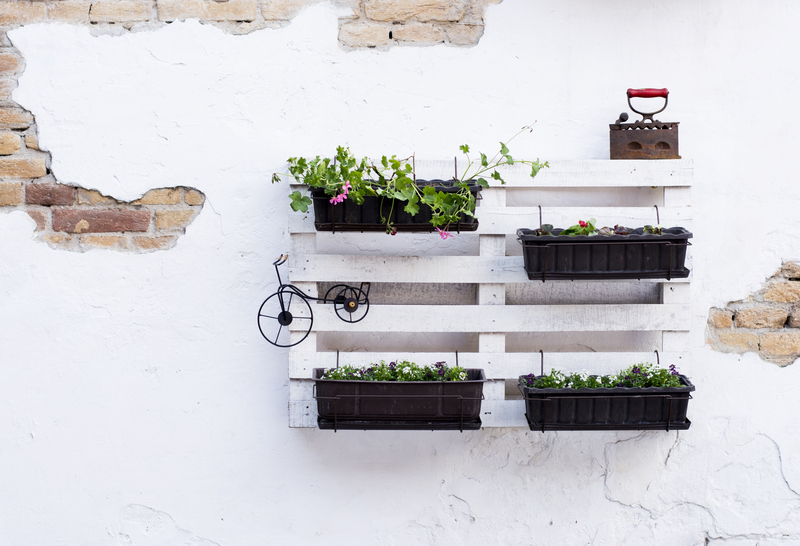Exploring the Functionality of a Builder's Skip in Construction
Posted on 20/09/2025
Exploring the Functionality of a Builder's Skip in Construction
In the ever-evolving world of construction, effective waste management is critical for project success, environmental responsibility, and site safety. Among the many solutions available, the builder's skip has become indispensable on both small and large building sites. But what exactly is a builder's skip, how does it function, and why is it a pivotal component in modern construction projects? This comprehensive article will delve deeply into the functionality of builder's skips, offering insights for project managers, construction professionals, and homeowners undertaking major renovations.

What Is a Builder's Skip?
A builder's skip, commonly referred to as a construction skip or building waste skip, is a large, open-topped waste container engineered for the collection, transportation, and disposal of construction waste. Skips are designed to withstand harsh site conditions and heavy loads, making them the go-to choice for efficient debris management on construction sites across the UK and beyond.
Key Characteristics of a Builder's Skip
- Robust Steel Construction: Built from reinforced steel, ensuring durability and resilience.
- Open Top Design: Allows for easy loading of large or irregularly-shaped debris.
- Various Sizes: On average, skips range from 2 to 16 cubic yards, with the 6-8 yard 'builder's skip' size being one of the most popular.
- Convenient Hook Lift or Chain System: For effortless loading and unloading from specialised skip lorries.
The Role of Builder's Skips in Construction Waste Management
Construction and demolition generate substantial amounts of waste, which, if not managed properly, can lead to safety hazards, project delays, environmental violations, and even legal penalties. Builder's skips provide a centralised and reliable method for collecting all types of construction waste - including rubble, timber, plastics, metal, packaging, and more. By facilitating systematic waste collection and segregation, skips help maintain an organised work environment and streamline site operations.
Understanding the Different Types of Skips Used in Construction
When exploring builder's skip functionality in construction, it's important to note that skips are tailored to specific site needs. The following is a breakdown of the most commonly used skip types and their typical applications:
1. Mini Skips (2-3 Yard Skips)
- Suitable for small domestic renovations or garden projects.
- Compact footprint; easy placement even in tight urban spaces.
- Not generally large enough for major construction debris.
2. Midi Skips (4-5 Yard Skips)
- Ideal for bathroom or kitchen refits and moderate building jobs.
- Provides a balance between size and site accessibility.
3. Builders Skips (6-8 Yard Skips)
- Most popular skip for new builds, large extensions, and commercial renovations.
- Spacious enough for bulky items, soil, and hardcore materials.
4. Large and Roll-on Roll-off (RoRo) Skips (12-40 Yard Skips)
- Designed for major construction, demolition, or industrial projects.
- Offer exceptional capacity for high-volume waste generation.
Choosing the optimal skip size depends on the scale and nature of the construction project, anticipated waste volume, and on-site space constraints.
How Does a Builder's Skip Work on Site?
The functionality of a builder's skip in construction can be summarised in several key stages:
-
Site Assessment and Skip Placement:
The process begins with evaluating site logistics, estimating waste production, and arranging for an appropriately sized skip to be delivered and placed in a safe, accessible location. -
Systematic Waste Loading:
Workers deposit debris, unwanted materials, and packaging directly into the skip as work progresses. Thanks to the open design, even heavy or awkwardly shaped items can be loaded with ease, sometimes with the help of wheelbarrows or mechanical diggers. -
Waste Segregation (If Required):
On some projects, skips are clearly labelled or colour-coded to separate recyclable materials from general waste, supporting compliance with environmental regulations. -
Collection and Transportation:
When the skip is filled to a designated level (never above the rim, to comply with legal road transport limits), a licensed skip hire company collects it, using a specially adapted lorry with a hydraulic arm or chain system. -
Responsible Disposal or Recycling:
The waste is then transported to a licensed transfer station or recycling facility, where it is sorted, processed, and disposed of in accordance with local regulations.
This systematic process ensures construction waste is handled with maximum efficiency, minimum disruption, and the least possible impact on the environment.
Major Benefits of Using Builder's Skips in Construction Projects
The practical advantages of builder's skips are numerous. Here are just a few reasons why these sturdy containers have become a mainstay on building sites:
-
Enhanced Site Safety:
By centralising waste, builder's skips reduce tripping hazards and clutter, contributing to safer, more navigable workspaces. -
Increased Efficiency:
Workers spend less time hauling debris, enabling them to focus on core construction tasks. This leads to improved workflow and potentially shorter project timelines. -
Environmental Compliance:
Many waste streams collected in skips can be recycled, helping construction projects meet legal requirements and corporate sustainability targets. -
Cost Effectiveness:
With streamlined waste removal, project managers can better predict disposal costs and avoid potential fines for improper waste handling. -
Flexibility:
Skips come in numerous sizes and configurations, making them adaptable to the evolving demands of any construction site.
Key Considerations for Effective Builder's Skip Use
To fully unlock the functionality of a builder's skip in construction, several best practices should be observed:
- Always select the correct skip size for your project to prevent overfilling and the need for additional collections.
- Ensure the skip is placed on stable, level ground, clear of obstructions and overhead lines.
- Secure necessary permits if the skip is to be located on public land or a highway.
- Never deposit hazardous materials (e.g., asbestos, chemicals, tyres, electrical items) without explicit permission from the skip hire provider.
- Load waste evenly and avoid piling debris above the skip's rim, which is illegal and unsafe.
Legal and Environmental Obligations Surrounding Builder's Skips
Modern construction projects are subject to stringent regulations concerning waste management. Failing to comply can result in penalties, reputational damage, and even prosecution. Here's what you need to know:
Legal Requirements
- If a skip is placed on public land, most local authorities require a skip permit.
- The skip must be clearly marked, with reflective strips and, in some cases, traffic cones and nighttime lighting.
- It is illegal to overload a skip, as this endangers both site workers and the public during transportation.
- Only licensed waste carriers should remove and process your site waste.
Environmental Considerations
- Separate recyclable materials wherever possible to minimise landfill use.
- Request that your skip hire company provides documentation (i.e., waste transfer notes) confirming responsible waste disposal.
- Stay up to date with the latest local and national recycling guidelines.

Latest Innovations in Builder's Skip Functionality
As sustainability and efficiency drive change in the construction industry, builder's skips are evolving to meet new standards and expectations. Some recent innovations include:
- Smart Monitoring Technology: Integrated sensors track waste levels and notify contractors when collection is required, maximising collection efficiency.
- Specialist Skips: Purpose-built skips for plasterboard, soils, metals, or hazardous waste streamline recycling and compliance efforts.
- Strong Emphasis on Circular Economy: Skip hire providers partner with recycling centres to ensure more waste is transformed into new building materials rather than going to landfill.
*Incorporating these advanced skips can further enhance a site's environmental credentials and operational efficiency.*
Conclusion: The Indispensable Role of Builder's Skips in Modern Construction
From the vast skyscrapers of city centres to modest home extensions, the builder's skip continues to play a central role in construction waste management. Beyond its simple appearance, the skip offers powerful functionality in collecting, containing, and processing building waste, directly contributing to safer sites, greener projects, and streamlined construction timelines.
As construction sites grow busier and environmental expectations increase, efficiently managing waste is no longer optional; it's essential. Thanks to their robustness, versatility, and continual innovation, builder's skips will remain an indispensable asset for any project, large or small.
Key Takeaways
- Builder's skips are robust, open-topped containers vital for on-site waste management.
- Choosing the right skip size and using it effectively can reduce costs, enhance safety, and streamline your construction project.
- Compliance with legal requirements and environmental regulations is essential when using skips in construction.
- Innovations in skip design and waste processing are driving the industry toward greener, smarter construction practices.
By understanding and fully utilising the functionality of builder's skips in construction, project leaders can ensure cleaner, safer, and more efficient building sites - paving the way to sustainable construction success.




